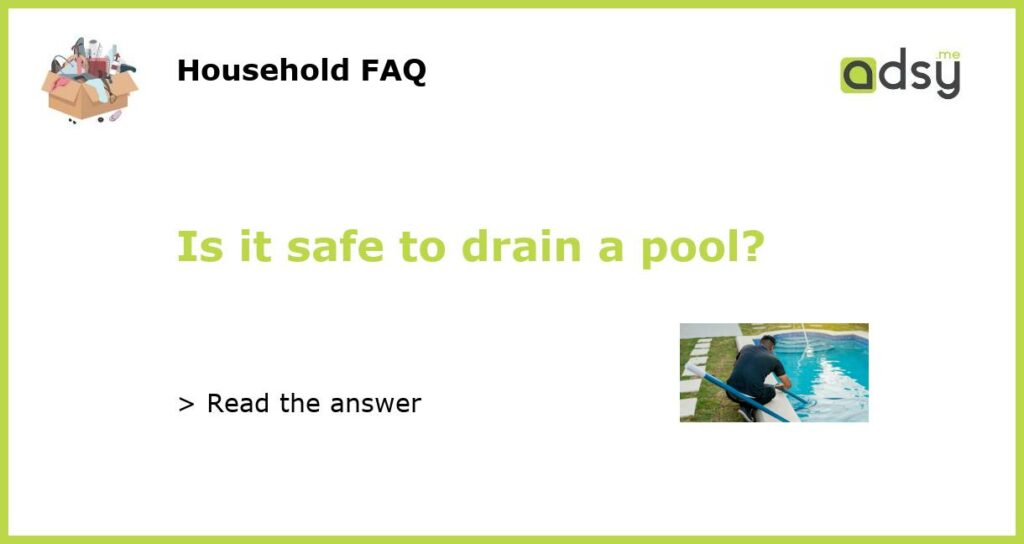The Importance of Proper Pool Maintenance
Maintaining a swimming pool is essential for both its longevity and the health and safety of swimmers. Regular maintenance tasks include cleaning the pool, checking and adjusting chemical levels, and ensuring the pool equipment is functioning properly. One aspect of pool maintenance that often comes up is whether it is safe to drain a pool. While draining a pool may be necessary for certain repairs or cleaning activities, it is important to consider the potential risks and take appropriate precautions.
Risks Associated with Draining a Pool
Draining a pool can pose several risks if not done correctly. The most significant risk is damage to the structural integrity of the pool itself. Pools are designed to have water to support the weight and pressure exerted on the walls and floor. Draining the pool completely can cause the walls to collapse or the floor to crack, leading to costly repairs.
Another risk is the potential for the pool to “pop” or float out of the ground if it is an in-ground pool. This can occur when the groundwater pressure exceeds the weight of the pool, causing it to rise. The hydrostatic pressure can also damage the pool’s plumbing and other equipment.
Draining a pool can also negatively impact the surrounding soil and landscaping. If the pool is drained too quickly or not properly contained, the water can flood neighboring yards, causing erosion and potential damage to property.
When is it Safe to Drain a Pool?
While there are risks associated with draining a pool, there are also circumstances where it is necessary and safe to do so. Some common reasons for draining your pool include repair or replacement of the pool’s structure, resurfacing the pool, or removing excessive debris.
Before draining the pool, it is crucial to consult with a professional pool contractor or technician who can assess the condition of the pool and provide guidance. They will be able to determine if draining is necessary and if any additional steps need to be taken to mitigate risks.
Safe Practices for Draining a Pool
If draining a pool is necessary, there are several precautions that should be taken to ensure the process is done safely:
– Consult with a professional pool contractor or technician to assess the pool’s condition and determine the best method for draining.
– Plan the draining process carefully, taking into account local regulations and potential impacts on the surrounding area.
– Use proper equipment and techniques to control the flow of water and prevent damage to the pool or surrounding landscape.
– Monitor the draining process closely to ensure there are no signs of structural damage or excessive pressure on the pool.
– Consider installing a hydrostatic relief valve to alleviate pressure build-up in the pool during draining.
While draining a pool can be necessary in certain situations, it is important to proceed with caution and seek professional advice. Risks associated with draining a pool include damage to the pool structure, popping or floating of the pool, and potential flooding or property damage. By consulting with a pool contractor or technician and following safe practices, you can minimize these risks and safely drain your pool when needed.

